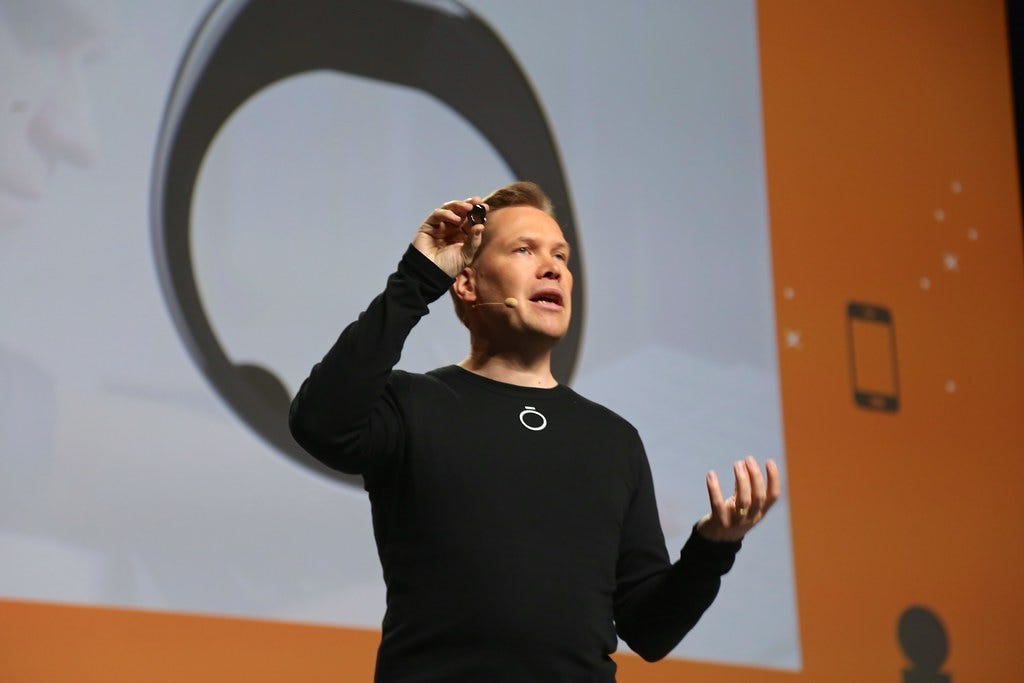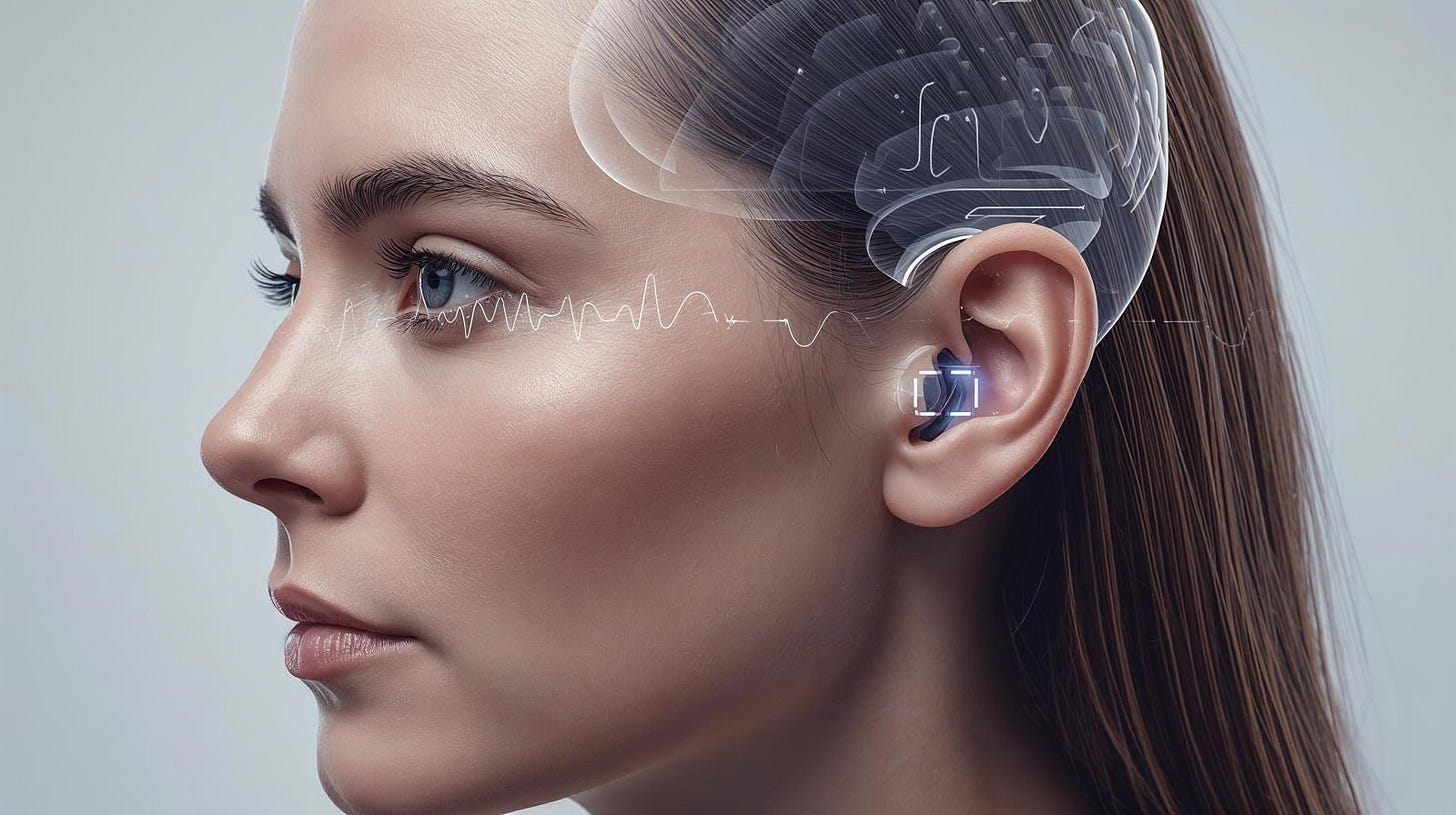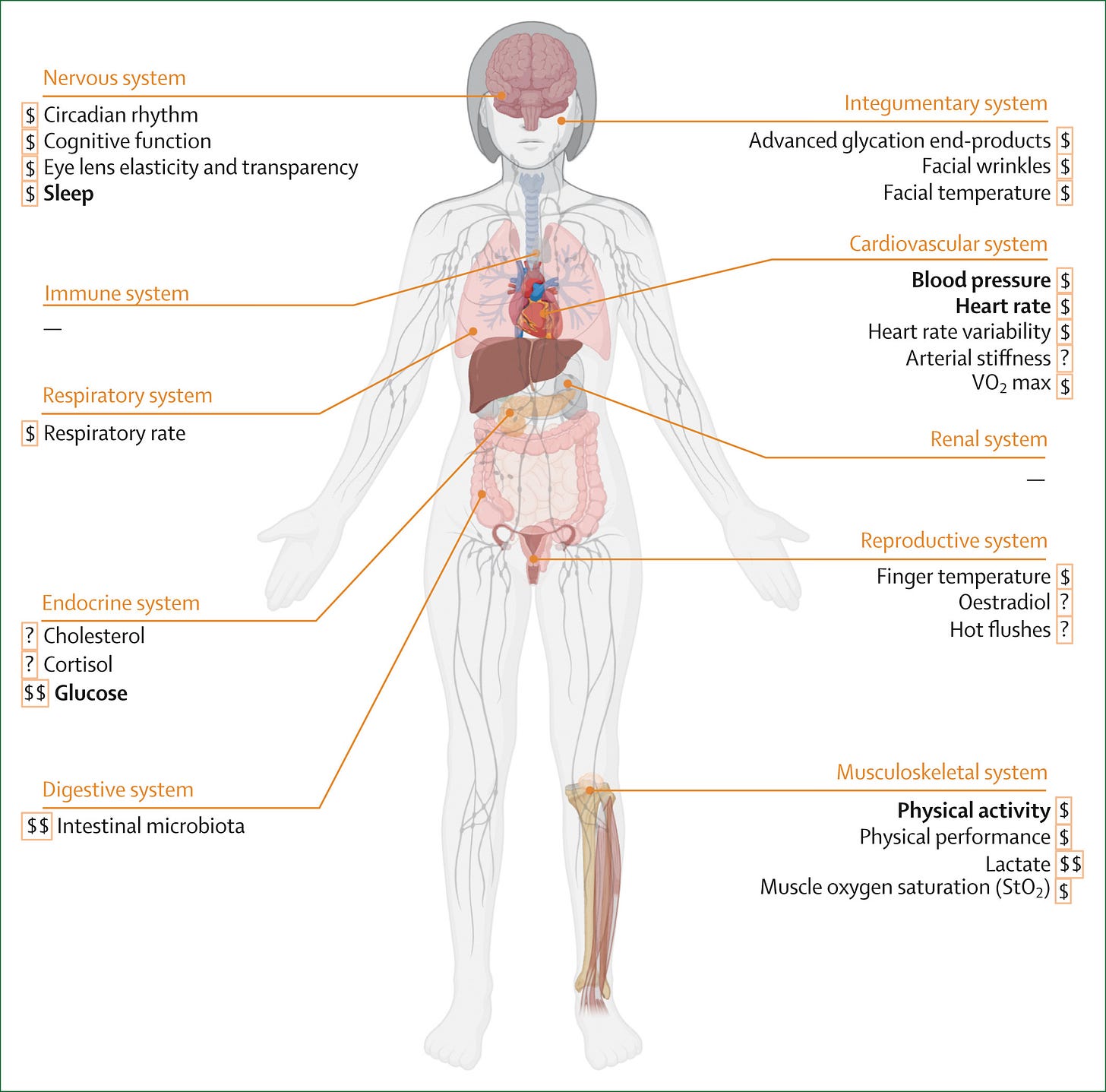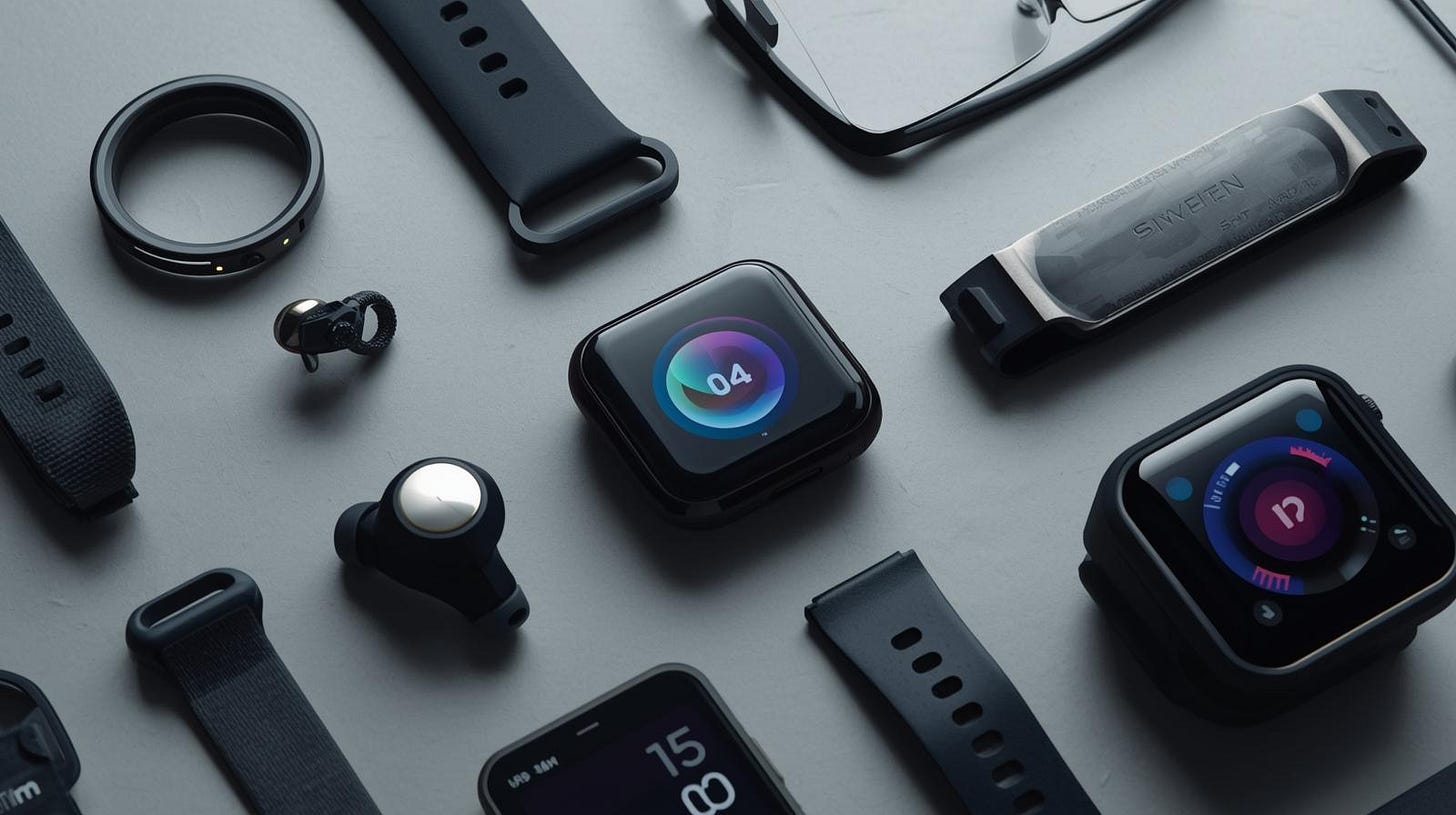Superhuman Sensing: Building the Operating System of the Human Body
How Rings, Wrists and Ears Are Creating a New Interface Between Biology and Technology
I wake up and glance at the ring on my finger. It has already analyzed my heartbeat, temperature, and sleep cycles, summarizing my recovery overnight. As I sit at my desk, my earbuds subtly remind me to adjust my posture, sensing the tilt of my head and shoulders. On my wrist, my watch logs heart rhythm, blood oxygen, and heart rate variability without a sound. Each device captures a fragment of the same story: how the body performs, adapts, and learns.
Finger, ear, and wrist are turning into a living laboratory of input wearables. These devices do not project holograms or extend the visual field. They listen, measure, and learn from the body. The path toward enhanced capability does not begin with a single all-powerful gadget. It begins with quiet sensors that read physiology with clarity and context.
Modern health and performance do not depend on one device that does everything. The future will be decentralized. The body offers privileged locations for measurement. A ring captures clean blood-volume signals and stable temperature. A watch combines electrical, optical, mechanical, and impedance sensing in a compact package. An earbud, close to both the brain and central circulation, connects physiology and cognition. The most capable systems will coordinate these instruments rather than rely on a single dominant device.
The Finger
Rings excel at night. The finger is well perfused and remains still under the blanket, ideal conditions for optical sensing. The Oura Ring uses near-infrared and green LEDs for photoplethysmography, capturing heart rate, heart rate variability, respiration, and oxygen saturation. It adds a thermistor to record skin temperature and an accelerometer to classify sleep stages. Samsung’s Galaxy Ring extends this model with workout detection and real-time movement sensors, while the Movano EvieMED Ring became the first with FDA-cleared SpO₂, marking the shift from wellness to medical validation.
Despite their size, rings are powerful. Motion can disturb signals and battery life still limits continuous measurement, yet the finger remains the cleanest site for recovery and sleep analytics.

The Wrist
The wrist is a sensor symphony. The Apple Watch measures heart rate optically, tracks oxygen saturation, and performs a single-lead electrocardiogram for rhythm classification. Samsung’s Galaxy Watch adds body composition through bioimpedance and estimates blood pressure using pulse timing, though it requires periodic calibration. Google’s Pixel Watch 2 and Fitbit Sense introduced continuous electrodermal activity sensing, quantifying stress through subtle skin-conductance changes.
Beyond health tracking, the wrist is becoming a control surface. Meta is developing a neural wristband that reads forearm muscle activity through surface electromyography, decoding micro-movements to control digital environments without visible gestures. This concept transforms the wrist into both sensor and controller, a physical interface for digital intention.
The wrist remains the most versatile and socially acceptable site for sensing. People already glance, tap, and interact there during the day, making it the natural hub for integration.
The Ear
The ear is the most underestimated form factor. The canal is stable and close to both the head and neck vasculature. In-ear optical sensors can measure heart rate with remarkable accuracy. The new Apple AirPods Pro 3 introduced a custom infrared photoplethysmography sensor that pulses light 256 times per second to measure heart rate and calorie expenditure during workouts. Motion sensors inside the earbuds detect posture while working at a desk and refine spatial-audio modeling during movement.
The ear is also a gateway to brain activity. Startups like NextSense use ear-EEG electrodes to monitor sleep stages, alertness, and cognitive load. Medical devices such as cosinuss° One already combine heart rate, oxygen saturation, and core temperature within the ear canal. Ear-based wearables are merging wellness with neuroscience, turning listening devices into real-time biofeedback systems.
Ear-mounted sensors interface with neural and auditory signals, while wrist and finger devices capture EMG, heart rhythm, and temperature—forming a distributed network where the body and technology learn together.

Inside the Sensor Stack
At its core, the story of wearables is a story of input; how data from the body becomes the language of intelligent systems. The following overview examines the key sensing modalities behind modern devices: how they capture biological signals, where they still fall short, and the innovations that could define their next generation.
Photoplethysmography
Used by Oura, Apple, Samsung, and WHOOP. Light from LEDs enters tissue and returns to a photodiode with intensity modulated by blood pulsation. The signal provides heart rate, variability, oxygen saturation, and respiration rate. Limitations include motion artifacts, skin tone, and contact pressure. The next step is multi-path optics reaching deeper tissues and waveform analysis for vascular stiffness and blood-pressure trends.
Electrocardiography
Implemented by Apple and Fitbit. Two electrodes form a circuit across the arms to record electrical heart activity, enabling rhythm detection and atrial fibrillation screening. One-lead ECGs cannot identify ischemia or conduction delays, but future devices may reconstruct multiple vectors or combine ECG with mechanical timing for complete hemodynamic profiles.
Bioimpedance
Led by Samsung. A small alternating current passes through tissue; the resulting impedance reveals body composition and hydration. Accuracy varies with posture and hydration, and the current may interfere with cardiac implants, so safety controls are critical. Next-generation devices will deliver continuous hydration and electrolyte tracking.
Electrodermal Activity
Used by Fitbit and Google’s Pixel Watch 2. Two electrodes measure skin conductance associated with sympathetic arousal. EDA is not emotion itself but reflects stress and cognitive load. Future systems will integrate EDA with heart-rate variability and temperature to produce adaptive biofeedback and mental-health insights.
Inertial Sensing
Standard in all modern wearables. Accelerometers and gyroscopes capture linear and rotational motion. Apple, Garmin, and Oura use these data for sleep, gait, posture, and activity classification. The next evolution is intelligent fusion of inertial data with optical heart-rate sensing to correct for motion noise and detect falls before they happen.
Cardio-Mechanical Sensing
Still in research and tested by WHOOP and academic prototypes. These sensors detect micro-vibrations and rotations from each heartbeat through seismocardiography and gyrocardiography. They estimate cardiac timing and stroke-volume proxies but struggle with weak signals and posture sensitivity. Future models could provide noninvasive cardiac-output and blood-pressure estimates.
Ear EEG
Driven by NextSense and research groups. Electrodes in or around the ear capture brain activity comfortably enough for daily use. They already perform sleep staging and attention monitoring. Next-generation versions will combine EEG with audio feedback for adaptive learning and focus optimization.

The Road to Superhuman Capability
Popular imagination envisions superhuman technology as a single device that grants new powers. Real progress looks different. It will be distributed. The body will host a constellation of sensors, each reading a different layer of function. Input wearables will create value in three stages. First, by capturing high-quality signals at the right anatomical sites. Second, by translating those signals into actionable features. Third, by orchestrating them into a unified view of the body.
The next generation of devices will deliver cleaner optical signals through adaptive emitter control and machine-learning filters. Cuffless blood-pressure estimation will improve through multi-channel timing models combining optical, electrical, and mechanical data. Bioimpedance will evolve into continuous hydration and metabolic monitoring. Ear-based sensing will extend beyond heart rate to brain and temperature data. Noninvasive glucose and hormone detection will take longer but will eventually arrive through sweat and microfluidic sensors.
This is not a story about one object that does everything. It is a story of orchestration. The greatest value will emerge from coordination among multiple data sources. The ring, the watch, and the earbud will each master a distinct language of the body. The intelligence will lie in how they communicate. When orchestration matures, input wearables will not merely track. They will interpret, predict, and protect. That is the true path toward enhanced capability, not through a single device, but through many instruments working in harmony.
In the end, superhuman sensing will not make us less human; it will deepen our understanding of life itself, guiding us toward greater health, awareness, and longevity.


